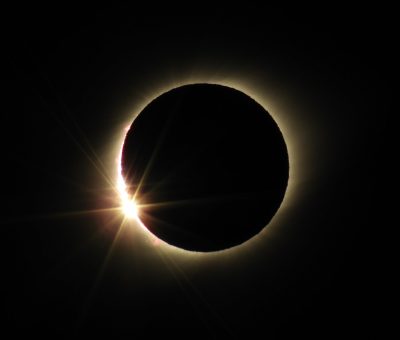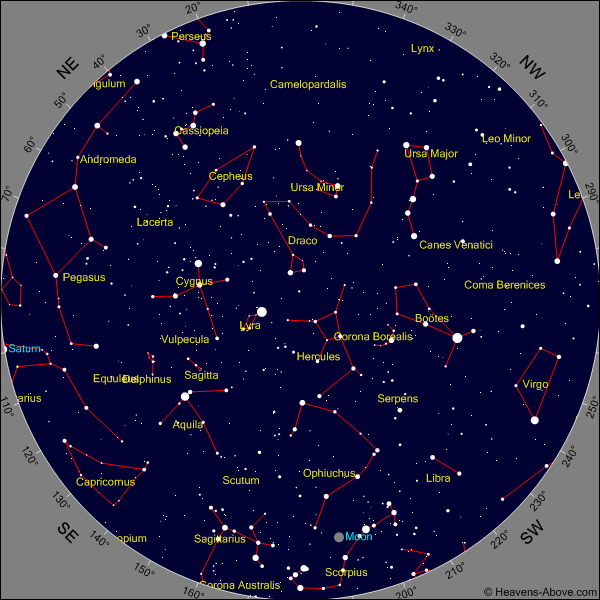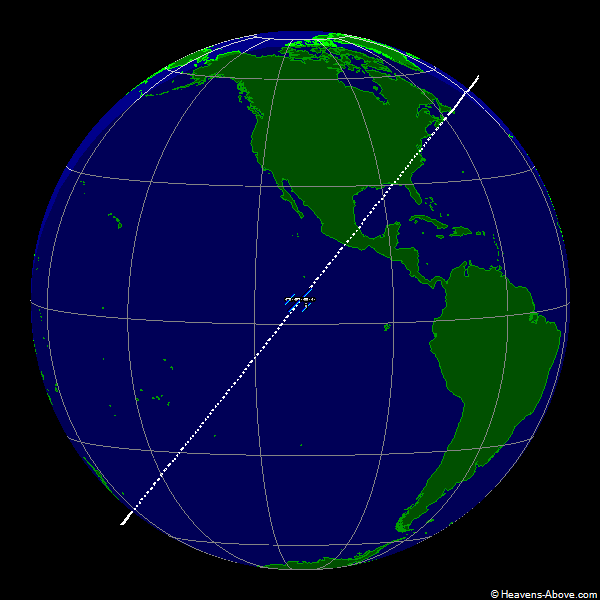***Board meetings are being held monthly on the 3rd Tuesday at 6:30pm via Zoom. They are open to the public. Please email: sovera-admin@sovera.org for the link***
Monthly meetings are held virtually and, when appropriate, are hybrid with the physical location at the 1879 Perkinsville Schoolhouse (1862 VT-106, Perkinsville, VT 05151).
Star Party Central — Members – please keep an eye out for email notifications about star party opportunities!
Upcoming:
How Amateur Astronomers and Citizen Scientists can contribute to Exoplanet Research
Please join SoVerA on December 10th at 7:00PM Eastern Time for a presentation by member Erik Schmitt. This will be an online meeting at https://zoom.us/j/94691230307.
After an overview of the recent history of extra-solar planet discovery milestones and methods of detection, this talk will focus on how amateur astronomers and citizen scientists with small telescopes or even no telescope at all can meaningfully contribute to exoplanet research. The NASA Exoplanet Watch collaboration is now open to the general public and there is a need for more optics and eyeballs gathering and reducing data from transiting exoplanets.
You will learn how to identify upcoming exoplanet transits, acquire images, prepare them for processing via Exoplanet Watch’s EXOTIC software tool, and upload the results to the AAVSO’s database. Afterwards, we’ll be able to see how these measurements contributed to the characterization of particular exoplanets!
All levels of experience are welcome and encouraged to attend.
Erik Schmitt is is a former observatory director and physics and astronomy teacher who now focuses on educational outreach and amateur astronomy. He is a SoVerA board member and resides in Brattleboro Vermont.
Past:
SoVerA – November Meeting – The Smart Scope Revolution: Introducing the Seestar S50
Please join SoVerA on November 12th at 7:00PM Eastern Time for a presentation by member Greg Shanos. This will be an online meeting at https://zoom.us/j/
Title: The Smart Scope Revolution: Introducing the Seestar S50
A smart scope combines a telescope, camera, tracking mount and computer into a compact portable imaging system. These marvels of technology are revolutionizing amateur astronomy by making deep sky astrophotography easy, affordable and most of all, fun! This presentation will introduce you to an inexpensive smart scope, the ZWO Seestar S50. This smart scope can take incredible images of the Sun, Moon, Planets, and Deep Sky Objects for only $449. The images you will see are absolutely amazing.
Gregory T. Shanos RPh, PharmD, ALPO member & NASA/JPL Solar System Ambassador, resides in Sarasota, Florida, and joined SoVerA during the COVID lockdown of 2020.
Solar viewing at the Springfield Apple Festival and Craft Show Saturday Oct 12th
We will be at the Springfield Vermont Apple Festival and Craft Show tomorrow (Saturday Oct 12th) from about 10AM to 2PM, with our fabulous new solar scope. Location details are in the link above.
Come and say hello if passing by, and view some solar prominences! ☀️
Star Party Oct 8th – 7pm
We are having a star party for those who can attend. Just mosey on down to our usual spot at 1879 Perkinsville Schoolhouse (1862 VT-106, Perkinsville, VT 05151) at 7pm on Tuesday.
Chester Fall Festival, 21st and 22nd September 2024
Weather permitting, SoVerA will provide solar viewing opportunities on the Saturday of the Chester Fall Festival Weekend. We will have at least one H-alpha solar scope and one neutral density scope.
Come along! We will be just east of the village green.
SoVerA Monthly Meeting September 10, 2024 — Hybrid Meeting
Join us on September 10th at 7:00 PM EST for a presentation by member Claudio Véliz, AIA. This will be a hybrid meeting – in person at our NEW location, the 1879 Perkinsville Schoolhouse (1862 VT-106, Perkinsville, VT 05151) and online at https://zoom.us/j/94691230307.
Title: RADIUS: The effort to decipher persistently anomalous celestial phenomena
There are phenomena; celestial objects being detected by astronomers, currently, which are evading easy explanation. That aspect is nothing new to astronomy, of course. But this is different…it’s getting a bit peculiar.
Exoplanets were confirmed to exist since the 1990’s, and their characteristics have become increasingly familiar to observers over those three decades. But, in 2015, citizen scientists observed data received from the Kepler space telescope for one star – in the constellation of Cygnus – which was observed as being…anomalous. The light patterns were seen to fit no transit patterns with which observers were then familiar. Now, a growing number of such odd cases, all different, even, from each other, are emerging from such data.
In this 1st of a 2-part presentation, we’ll review the data from these photometric detections, briefly, and what those more typical patterns mean, so as to contrast them with the oddities at hand. Then, we’ll review a couple of these strange case studies which are securing such notoriety, and a handful of the explanations which have been proposed, including non-natural ones, which researchers now do say they cannot entirely dismiss, though with some caution.
In the 2nd portion of the presentation, scheduled for November, we’ll review a handful of new, large-aperture telescopes about to be commissioned, and the optical technologies they will bring to bear upon these extreme mysteries. We’ll cover why we may need to grow accustomed to more and more of these peculiar observations, and why we should prepare ourselves for a bit of a jolt about the nearby celestial radius of our neighborhood, shortly. Also, we’ll discuss how researchers might go about confirming any possible living systems which are detected.
SoVerA Monthly Meeting August 13, 2024 — In-Person Meeting In Perkinsville, VT.
Join us on Tuesday, August 13th at 7:00 pm at the 1879 Schoolhouse in Perkinsville, Vt for an in-person meeting. If the weather cooperates we will do some observing after our meeting, so feel free to bring a telescope. We will set up on Hoisington Field, adjacent to the 1879 Schoolhouse. There is plenty of parking, a large level area for observing, and plenty of dark sky.
The meeting itself will include election of the board of directors of SoVerA, and a presentation on new developments with SoVerA.
We currently have four board members and have an opening for a fifth. The four current board members are willing to continue, but any active member can, at the meeting, propose additional candidates. If you want to participate in the voting, please make sure that you are current on your dues. The four current board members are particularly hoping that a fifth member will be elected who is willing to serve as an officer of the board, in the capacity of secretary. Our long-term secretary is now in graduate school, and no longer has the free time to devote to that duty.
There will be a presentation on the new observatory which we will be setting up on Hoisington Field, and a showing of the new solar telescope which SoVerA shares with two local libraries.
The observatory is already on site, and restoration work is in the beginning stages. If the weather is good, we will all be able to check it out in the flesh; otherwise, we will show the observatory via a PowerPoint. And, again if the weather cooperates, we will set up scopes and do some observing.
For remote members, the bulk of the meeting will also be accessible via ZOOM. You can find the ZOOM link on the SoVerA website.
We hope you will join us on Tuesday, August 13th, at 7:00 pm at the 1879 Schoolhouse in Perkinsville, Vt. The street address is 1862 VT-106, Perkinsville, VT 05151.
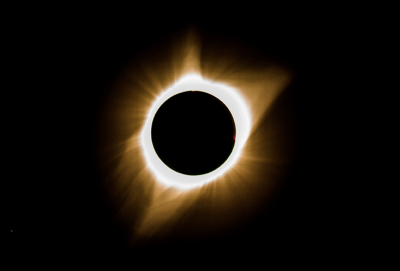
credit: Keon Gibson
SoVerA Monthly Meeting May 14, 2024 Our Experiences of the Eclipse
Join the Southern Vermont Astronomy Group (SoVerA) for our monthly ZOOM meeting at 7:00 pm on Tuesday, May 14, 2024.
This month we will discuss the April 8, 2024 solar eclipse and share our varied experiences of that phenomenon. There will be a brief discussion of the new solar telescope which SoVerA now owns with two other local organizations.
For those of you who took photographs of the event, please bring your images to share.
Monthly second Tuesday meetings are a regular feature of SoVerA. Monthly second Tuesday meetings are a regular feature of SoVerA. The link to our ZOOM meetings is: https://zoom.us/j/94691230307#success
We look forward to hearing your experience of the eclipse.
February 13, 2024 7:00PM EST — Claudio Veliz — Deciphering Inexplicable Astronomical Data — Hybrid Meeting
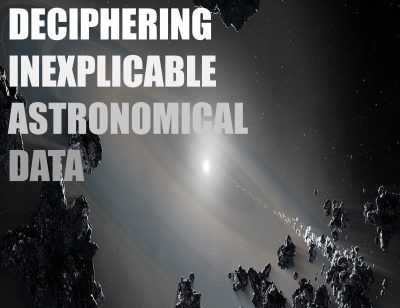
Join SoVerA on February 13 at 7:00PM EST for a presentation by member Claudio Véliz, AIA. This will be a hybrid meeting – in person at our NEW location, the 1879 Perkinsville Schoolhouse (1862 VT-106, Perkinsville, VT 05151) and online at https://zoom.us/j/94691230307.
With the advent of space-based observatories, and professionally overseen citizen science data evaluation programs in full swing, a growing handful of recent observations have been eluding at least conventional explanation.
Since exoplanets were confirmed to exist in the mid-1990’s, their observed behavior has been detected using a number of techniques, especially the “transit system,” which we’ll cover. Then, in 2015, some data collected by the Kepler space telescope regarding one object in particular – in the constellation of Cygnus – was observed displaying inexplicable behavior. The data were seen to fit no understood patterns with which observers were familiar, so far. It was initially dismissed as probably faulty data. However, thorough examinations and reviews of the methodology used confirmed that the data was “clean.” Since then, a handful of other celestial targets, some with even more peculiar characteristics, have been detected.
After a brief review of exoplanet detection methodology, we’ll cover the sorts of light curve patterns which are currently the “norm” so as to contrast them with those of these confounding objects. We’ll look at a couple of these, so-far, anomalous exceptions which are getting so much attention by astronomers, and consider a handful of the explanations which have been proposed which can’t discount the potential, if very unlikely, for non-natural causes.
Finally, we’ll review a couple of the remarkable telescopes about to be commissioned, and why we may soon see – and perhaps explain – more of these increasingly mysterious phenomena.
Claudio Véliz pursues twin professions in architecture and astronomy. He has owned an award-winning architecture firm – Claudio Véliz Architect PLLC/AIA – since 1982, designing residential, institutional, municipal, retail and corporate facilities. In his astronomy track, he was Co-Founder, and President of the Southern Vermont Astronomy Group (SoVerA), headquartered in Chester, Vermont. Now lecturing in the CALL Program at Keene State College, New Hampshire, previously he worked, and lectured at New York’s Hayden Planetarium, and at the Astronomy Departments of Columbia University, and Castleton University. He also conducts data support surveys and time series observations from his Duck Deck Observatory in Southern Vermont.
January 9, 2024 7:00PM EST — Al Boudreau — Planet X — Virtual meeting via Zoom https://zoom.us/j/94691230307
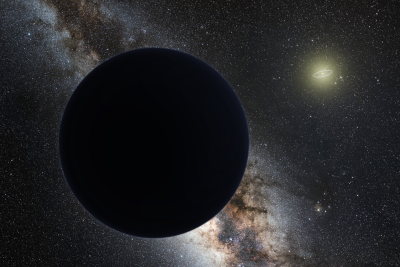
Please join us on Tuesday, January 9, at 7:00PM EST for a virtual monthly meeting! SoVerA is proud to host Al Boudreau who will be presenting Planet X.
Planet X is one great mystery of modern astronomy. Strange happenings in our outer solar system could be the effect of a giant planet lurking there. This presentation examines why we think it might be out there while also exploring the tools we have to find it and the challenges those tools face.
Al Boudreau is a retired aerospace engineer who has been active in astronomy for many years. He previously built and operated his own observatory featuring a 14-inch telescope with an electronic camera. Al lives in Castleton, Vermont, and is active with the Green Mountain Astronomers who operate the observatory at Castleton University.
December 12, 2023 7:00PM EST — Kevin Paquet — Venus! — Hybrid meeting in person at Chester Town Hall (556 Elm Street, Chester, VT) and via Zoom https://zoom.us/j/94691230307
Often called Earth’s sister planet, Venus is nearby and made of much the same stuff. However, the heat and pressure of the Venusian surface are like nothing on Earth.
Cloaked in clouds, Venus was once the site of fevered expectations in science fiction. Science fact dashed the hopes for a swamp world filled with menacing lizards, but also revealed a surprising temperate zone high above the hostile surface.
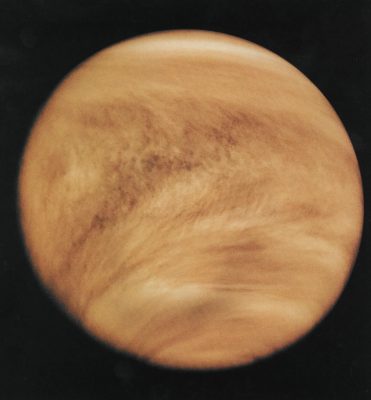
Could there be life in the clouds? What was the surface like before a runaway greenhouse effect? A new generation of spacecraft are being readied to study these questions and more. Join SoVerA in person or online at 7 p.m. on the 12th to learn about the history of Venus and our hopes for what it holds in the future.
November 14, 2023 7:00PM EST — Gregory Shanos — OSIRIS REx and Hayabusa — Virtual meeting via Zoom https://zoom.us/j/94691230307
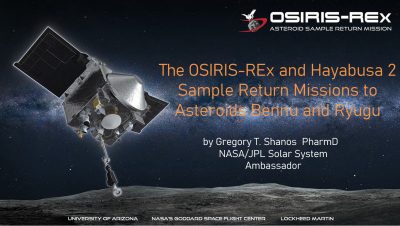
Please join us on Tuesday, November 14, at 7:00PM EST for a virtual monthly meeting! SoVerA is proud to again host SoVerA member and NASA/JPL Solar System Ambassador Gregory Shanos who will be presenting The OSIRIS-REx and Hayabusa 2 Sample Return Missions to Asteroids Bennu and Ryugu.
This virtual meeting will be available at https://zoom.us/j/94691230307.
Greg resides in Sarasota, Florida and joined SoVerA during the COVID lockdown of 2020. His presentation will cover the Bennu samples from the OSIRIS-Rex mission that were returned to earth on September 24th, 2023 and shown to the world on October 11, 2023. JAXA’s Hyabusa 2 samples from Ryugu were returned to earth on December 5, 2020 and have since been thoroughly analyzed. Greg will present the current findings from both missions from these two carbonaceous asteroids.
September 12, 2023 7:00PM EDT — Dr. Faber — LIGO — Virtual meeting via Zoom https://zoom.us/j/94691230307
Please join us on Tuesday, September 12, at 7:00PM EDT for a virtual monthly meeting! SoVerA is excited to host Dr. Josh Faber of RIT who will be presenting on the Laser Interferometer Gravitational Wave Observatory.
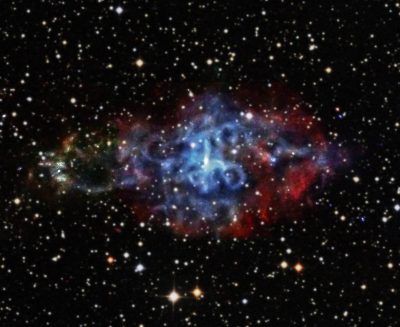
(Image Credit: NASA/CXC/SAO)
This virtual meeting will be available at https://zoom.us/j/94691230307.
In this talk, Dr. Faber will talk about how LIGO, the Laser Interferometer Gravitational Wave Observatory, is changing our view of what we can observe in the universe and giving us new insights into how stars live and die. Focusing on neutron stars, he will explain how letting gravity crash them together pushes forward our understanding of nuclear physics, while happily creating many of the elements that make up both people and the world in which we live. Superlatives like “the most precise measurement of anything, ever” will be thrown about, and fun will be had by all.
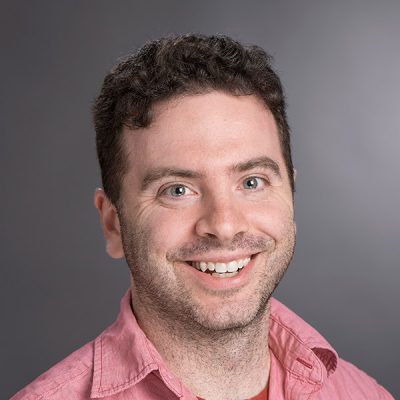
Josh Faber grew up in Rochester, NY, and wanted to be an astronomer since seeing Cosmos at age 4. After attending Simon’s Rock College of Bard and the University at Stony Brook as an undergrad, he received his PhD in Physics from MIT. He joined the faculty of the School of Mathematical Sciences and Center for Computational Relativity and Gravitation at RIT in 2007, and has been part of the Astrophysical Sciences and Technology PhD program faculty since its inception. He has served as the Head of the SMS for the past year, and is still trying to figure out how that happened too.
June 13, 2023 7:00PM EDT — Rick Hunter — 100 Years of Springfield Telescope Makers — Hybrid at Chester Town Hall and via Zoom https://zoom.us/j/94691230307
Please join us on Tuesday, June 13, at 7:00PM EDT for a hybrid monthly meeting. SoVerA is hosting Rick Hunter of the Springfield Telescope Makers – a group that is celebrating their 100th year! The in person meeting will be at the Chester, VT, town hall and the virtual meeting will be available at https://zoom.us/j/94691230307.
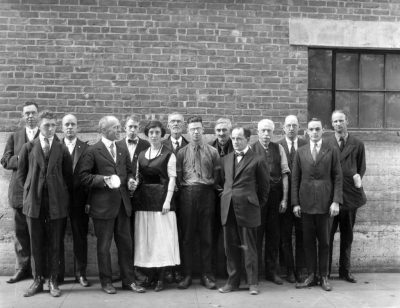
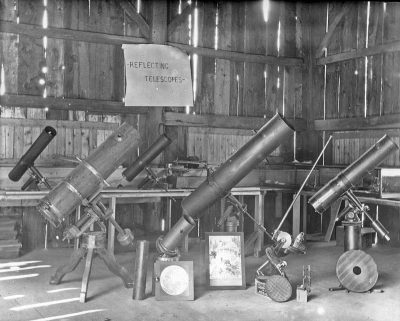
(The first telescope makers and some of their telescopes at the Springfield Agricultural Fair in 1922 prior to the inception of Springfield Telescope Makers)
Rick will discuss this year’s Springfield Telescope Makers’ 100 year celebration, with some account of the early history of the group, Russell Porter and his accomplishments, and what to expect at this year’s Stellafane Convention, Thursday – Saturday, August 17-19.
May 9, 2023 7:00PM EDT — Michel Tournay — Solar Eclipses! — Hybrid at Chester Town Hall and via Zoom https://zoom.us/j/94691230307
Please join us on Tuesday, May 9, at 7:00PM EDT for a hybrid monthly meeting! SoVerA is excited to again host Michel Tournay who will be discussing his adventures and experiences with solar eclipses! The in person meeting will be at the Chester, VT, town hall and the virtual meeting will be available at https://zoom.us/j/94691230307.
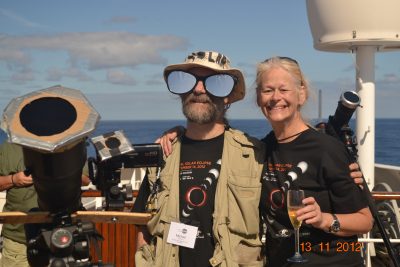
(Michel and his now wife, post eclipse and post-proposal!)
Michel Tournay is the self-proclaimed “crazy Canadian who worked most of his life in the great Canadian north and fell in love with the auroras and the polar bears.” In 1994, he saw his first solar eclipse…and got hooked! His famous post eclipse phrase: ‘’Where and when is the next one?” Well: Chile, Guadelouppe, Africa, the North Pole, China, Easter island (where he met his future wife Susan), Fiji (where he proposed), Svalbard (their honeymoon), and USA, are among the places where he has been able to view his newly found obsession. Being retired for 4 1/2 years now, Michel and his wife live in Sutton, in the eastern townships of Québec. COVID made them miss the 2020 eclipse in Chile, but now they are set to see the annular eclipse next October and the total solar eclipse in 2024.
May’s presentation is all about who, what, where, when and why to see it in 2024!
April 11, 2023 7:00PM EDT — Pat Porch — Telescopes! — Hybrid at Chester Town Hall and via Zoom https://zoom.us/j/94691230307
Please join us on Tuesday, April 11 at 7:00PM EDT for the Southern Vermont Astronomy Group’s monthly meeting where Pat Porch will be showing different types of telescopes! This will be a hybrid event, with telescopes on hand for a close up look for those attending in person at the Chester, VT, Town Hall (556 Elm St, Chester, VT 05143). We will also be streaming the meeting virtually via zoom (https://zoom.us/j/94691230307).
Thinking about buying a telescope, upgrading the one you have or maybe just understanding telescopes better? SoVerA member Pat Porch will discuss the different types of common telescopes, how they work and the pros and cons of each type. Commercial buying vs. build your own, new or used, will be discussed and he will share some suggestions that can help you decide on your next telescope purchase. Also find out how Covid-19 has changed telescope buying
March 14, 2023 7:00PM EST — Dr. Michael Lam — Celestial Clocks and Ripples in Spacetime — via Zoom https://zoom.us/j/94691230307
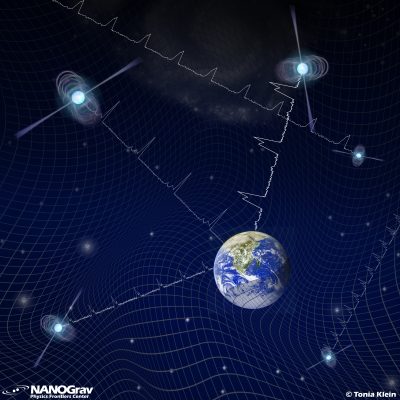
Please join us on Tuesday, March 14, at 7:00PM EST for a special event with expert speaker Dr. Michael Lam! Dr. Lam will be presenting his talk “Celestial Clocks and Ripples in Spacetime.” This will be a virtual meeting at https://zoom.us/j/94691230307.
We are living in a sea of gravitational waves – ripples in spacetime predicted by Einstein’s General Relativity and observed directly by ground-based detectors over the last few years. Another method on the cusp of making its first observations uses objects known as pulsars, precision celestial clocks in space. Dr. Lam will discuss how we build our galaxy-wide observatory with pulsars and the largest radio telescopes on Earth, the current challenges and advances in our scientific understanding of pulsar timing, and the science we hope to learn about in detecting gravitational waves as we reach this new frontier of astronomy.
Dr. Lam is an astrophysicist at the Rochester Institute of Technology in the School of Physics and Astronomy. He is a member of the North American Nanohertz Observatory for Gravitational Waves, whose goal is to detect and characterize low-frequency gravitational waves coming from a variety of sources such as supermassive black hole binaries at the centers of merging galaxies. He works heavily in the Noise Budget Working Group, whose task is to characterize noise sources in the pulsar timing array detector, optimize the sensitivity of that detector, and correct/mitigate the various sources of noise. One large component of this work is the study of the ionized interstellar medium and as such he also uses the pulsars as tools to study a wide range of small- and large-scale phenomena in the Galactic electron content. He has recently extended this work on the interstellar medium to using Fast Radio Bursts as probes of the intergalactic medium. He also works on pulsar timing observations, gravitational wave detection methods, and cyber-infrastructure development for the collaboration. In addition, he is a heavy contributor to education and public outreach efforts and has recently rotated off as a member of NANOGrav’s Equity and Climate Committee.
February 14, 2023 7:00PM EST — Dr. Michael Richmond — The Long Journey from a Raw Image to a Calibrated Light Curve — via Zoom https://zoom.us/j/94691230307
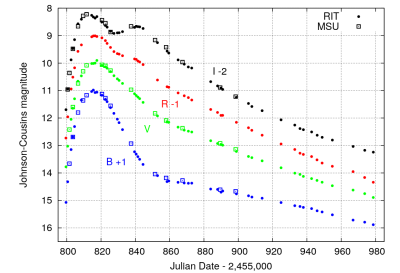
Please join us on Tuesday, February 14, at 7:00PM EST for a special event with expert speaker Dr. Michael Richmond! Dr. Richmond will be presenting his talk “The Long Journey from a Raw Image to a Calibrated Light Curve.” This will be a virtual meeting at https://zoom.us/j/94691230307.
Astronomers of all sorts — amateur and professional — use their telescopes to take images of objects in the night sky. But before we can use those images for scientific purposes, we need to clean them up, correcting for defects in the optical system and the camera. We must also account for extinction by the passing clouds and the Earth’s atmosphere in general, and then calibrate the results so that we can compare them properly to measurements made with other telescopes. I will explain these procedures and show examples of pictures and measurements, ending with some light curves created with a 12-inch telescope in cloudy Rochester, New York.
Michael Richmond is an astronomer at the Rochester Institute of Technology, specializing in software and the study of transient objects. He enjoys frequent trips to the Kitt Peak National Observatory in Arizona and to the Institute of Astronomy in Tokyo, but is happy to observe with the small telescopes on campus as well.
January 10, 2023 7:00PM EST — Erik Schmitt: Special Relativity and the Past, Present, and Future — HYBRID at Chester Town Hall (556 Elm Street, Chester, VT) and via Zoom https://zoom.us/j/94691230307
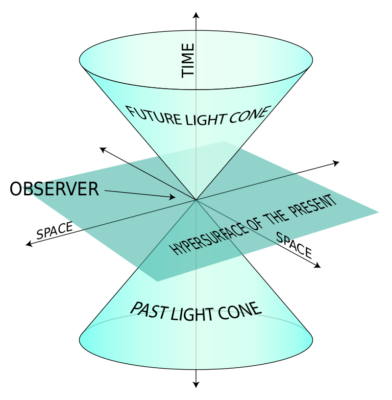
Please join us on Tuesday, January 10, at 7:00PM EDT for the Southern Vermont Astronomy Group’s monthly meeting where Erik Schmitt will be presenting Special Relativity and the Past, Present, and Future. This will be our first hybrid event for both in-person and virtual attendees and we look forward to seeing people again!
You can try to run from your past, but it may catch up to you at the speed of light.
This talk is a self-contained follow up to a previous SoVerA talk about the implications of Einstein’s Special Relativity. First we will establish some basics on causality, why time appears to slow down when objects are moving extremely fast, and defining your own personal past and future light cones. Then we will endeavor to grapple with fundamental philosophical questions regarding the nature of our universe. Does Special Relativity imply or require that we live in a deterministic universe? If so, what does that mean for our conceptions of free will?
This will be a hybrid meeting held both in-person at the Chester, VT, Town Hall (556 Elm St, Chester, VT 05143) and virtually via zoom (https://zoom.us/j/94691230307). The goal will be to catalyze a lively classroom style discussion and debate of the concepts presented among attendees. Quiet listeners need not worry as you are welcome too!
Erik Schmitt is a SoVerA board member, Director of the Perkin Observatory, and High School Physics and Astronomy teacher at Dublin School in Dublin New Hampshire.
December 13, 2022 7:00PM EST — Dr. Elena Sabbi: Unlocking the Secrets of Stars and Planets’ Formation with the James Webb Space Telescope — VIRTUAL via Zoom https://zoom.us/j/94691230307

Please join us on Tuesday, December 13, at 7:00PM EST for a special event with expert speaker Dr. Elena Sabbi! Dr. Sabbi will be presenting her talk “Unlocking the secrets of stars and planets’ formation with the James Webb Space Telescope.” This will be a virtual meeting at https://zoom.us/j/94691230307.
In just one year since its launch, the James Webb Space Telescope has repeatedly surprised astronomers and scientists, unlocking hidden regions of star formation and stellar nurseries. Equipped with a unique set of powerful instruments, JWST provides the first detailed analysis of all the components needed to form stars and planets.
In this talk, we will explore the life cycle of stars as seen through the eyes of JWST. In this tour, we will move from our Solar System through nearby stellar nurseries to the bright, massive regions of star formation that shine in the high-redshift galaxies. Together we will discuss how JWST is rewriting our understanding of how stars form and how star formation has driven the evolution of the Universe since its origin.
Dr. Sabbi is a scientist at the Space Telescope Science Institute (STScI), where she uses the Hubble and Webb Space Telescopes to study how stars form and evolve in the most massive clusters in the Milky Way and nearby galaxies. She is interested in understanding how local and global conditions shape the early evolution of stars and clusters, the properties of primordial binaries, and the initial mass function. AT STScI, she is currently the Deputy Head of the STScI Science Mission Office. Previously, she led the Webb Near-Infrared Spectrograph (NIRSpecBranch through development and commissioning and the Hubble Wide Field Camera 3 (WFC3) Branch. In addition, she is the principal investigator of several Hubble programs, including the Hubble Tarantula Treasury Project (HTTP) and GULP: Galaxy Legacy UV Project.
November 8, 2022 7:00PM EST — Mars 2022: An Observer’s Guide Part II – Imaging — VIRTUAL via Zoom https://zoom.us/j/94691230307
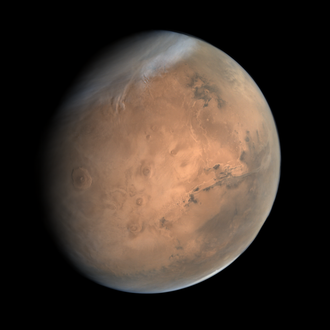
(Image Credit: ISRO / ISSDC / Justin Cowart)
Please join us on Tuesday, November 8, at 7:00PM EST for the Southern Vermont Astronomy Group’s monthly meeting. This month’s speaker, NASA/JPL Solar System Ambassador Gregory Shanos, will present the second part of the two lecture series entitled: Mars 2022: An Observer’s Guide – Part II – Imaging.
Mars will soon be rising in the evening sky in early December so now is the time to familiarize ourselves with the planet. This month we will discuss how to attach a planetary video camera (a modern webcam) to your telescope, take a one minute video, align and stack the individual frames on a laptop computer to create a photo that rivals the quality of the Hubble Space Telescope! Getting started is relatively inexpensive with most of the software being free from the internet. Image photographs are archived by the Association of Lunar and Planetary Observers for Amateur-Professional Collaborations.
This will be a virtual meeting at https://zoom.us/j/94691230307. We look forward to seeing you there!
October 11, 2022 7:00PM EDT — Mars 2022: An Observer’s Guide Part 1 – Visual — VIRTUAL via Zoom https://zoom.us/j/94691230307

(Image Credit: ISRO / ISSDC / Justin Cowart)
Please join us on Tuesday, October 11, at 7:00PM EDT for the Southern Vermont Astronomy Group’s monthly meeting. This month’s speaker is NASA/JPL Solar System Ambassador Gregory Shanos who will present a two part lecture series entitled: Mars 2022: An Observer’s Guide Part 1 Visual. Part II, which will focus on imaging, will be presented on November 8, 2022. Mars will soon be rising in the evening sky in early December so now is the time to familiarize ourselves with the planet. At October’s meeting, we will discuss how to view Mars through a telescope under high power, identify and sketch its surface features, as well as how to use various color filters to bring out subtle detail on the planet.
This will be a virtual meeting at https://zoom.us/j/94691230307. We look forward to seeing you there!
August 9, 2022 7:00PM EDT — Ask Astronomers and Vote for Board Members
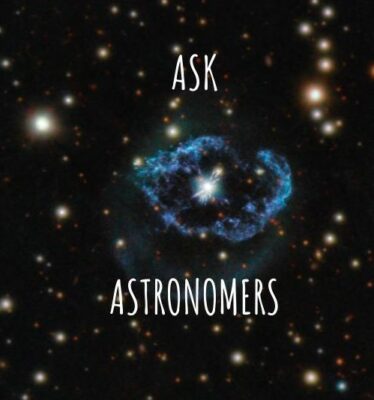
Please join us on Tuesday, August 9, at 7:00PM EDT for the Southern Vermont Astronomy Group’s monthly meeting, with August’s topic of “Ask Astronomers!” hosted by members of SoVerA.
This meeting will be held via Zoom at https://zoom.us/j/94691230307.
We will host a conversation among members and attendees – doing our best to answer whatever is asked. Please feel free to bring any questions regarding astronomy equipment for practical advice on its use or for diagnosis and suggested repair of any problems.
In addition to this discussion, SoVerA members are encouraged to attend for the yearly vote of our board members. We are also seeking new additions to our board, so if you have a passion for astronomy and would like to join our ranks, please let us know!
We are looking forward to an evening of lively discussion and hope to see you there!
July 12, 2022 7:00PM EDT — Dr. Hugh Crowl: How Do Galaxies Lose Their Gas? Galaxy Transformation in the Virgo Cluster
Please join us on Tuesday, July 12, at 7:00PM EDT for a special event! The Southern Vermont Astronomy Group, in collaboration with Middlebury College, Mittelman Observatory, and the Dublin School, is hosting Dr. Hugh Crowl of Bennington College.
This is a virtual event and prior registration is required – please do so at http://sovera.org/astrotalk.
Star formation in galaxies profoundly affects the appearance and shape of galaxies — so-called galaxy morphology. Both star formation and morphology have changed as the universe has evolved. In galaxies like our own Milky Way, star formation continues at a more or less constant rate to this day. However, in the nearby Virgo Cluster, we see evidence that star formation and, therefore, galaxy morphology, are profoundly affected by the dense cluster environment. I will show examples of galaxies currently being transformed by gas stripping in the Virgo cluster, discuss how we can use the stars left behind to understand the galaxies’ history, and describe what we think these events mean for the future of galaxies in the Virgo Cluster.
Hugh Crowl is an astronomer interested in the evolution of galaxies, particularly in the local universe. He received his undergraduate degree from Wesleyan University and his PhD from Yale University. He is a member of the faculty in Physics & Astronomy at Bennington College.
June 14, 2022 7:00PM EDT — Astronomy in Poetry and What’s in the Sky this Summer https://zoom.us/j/94691230307
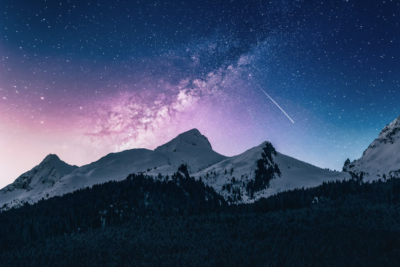
Rick Bates will present poems with astronomical themes, including works by Robert Frost, Walt Whitman, Louis MacNeice, Robert Shapiro, and Sara Howe.
Pat Porch will present an expanded version of “What’s in the Sky”. He will also be presenting some tips for novice astronomers to help make the most of your observing session.
May 10, 2022 7:00PM EDT — John Gianforte: Astronomy at the University of New Hampshire – Research and Outreach https://zoom.us/j/94691230307
The University of New Hampshire is an R1 public institution and has for many years been on the forefront of Material Science, Nuclear Physics, Condensed Matter, Space Plasma Physics and Heliospheric Physics within the Institute for the study of Earth Oceans (EOS)( the Space, the Space Science Center), and the Department of Physics and Astronomy.
Over the last few years, there has been a concerted effort to embrace Astronomy with the adoption of an Astronomy minor and several new and exciting courses that deal with astronomical topics. There has also been a dramatic expansion of EPO across New Hampshire and beyond. John’s talk will focus on the new research and public outreach being carried out from the University’s Observatory. John will touch on the exoplanet research currently being done by John and his students and the expanded science outreach being carried out. He will also touch on the upcoming New England fall Astronomy Festival (NEFAF 2022) that will take place on the UNH Durham campus on Friday, September 30 and Saturday, October 1, 2022.
John is the Director of the University of New Hampshire Observatory, Astronomer, and Extension Associate Professor/Space Science Education, Youth Development and Education State Specialist. His main astronomical research interests include the observation and analysis of transits of exoplanets, and the characterization of exoplanetary systems. John teaches Astronomy and Physics courses for the Physics and Astronomy Department at UNH in Durham and has taught Astronomy-related courses for the USNH System since 2002.
April 12, 2022 7:00PM EDT — In the Skies in April and May & Discussion Forum: The Future of SoVerA Monthly Meetings https://zoom.us/j/94691230307
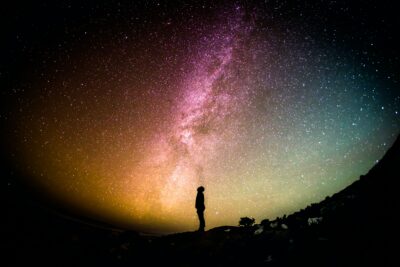
(Photo by Greg Rakozy on Unsplash)
Please join us Tuesday, April 12, 2022, at 7:00pm for our monthly meeting. The meeting will be via ZOOM, click here to join the meeting: https://zoom.us/j/94691230307.
We will begin with a presentation by SoVerA President Patrick Porch on what we can look forward to viewing in April and May, as evenings become more hospitable.
The main topic of the meeting will be the post-COVID future of SoVerA.
During the pandemic we have added active members who do not live within easy driving distance of Chester, VT. The use of ZOOM has greatly expanded our footprint. However, amateur astronomy is not entirely a digital activity. We own a variety of telescopes and binoculars, and we have a tradition of gathering in dark-sky sites to observe the actual night sky, to set up our viewing equipment and share a time of interaction with one another.
We propose to spend most of the April meeting discussing what we want SoVerA to look like in the future. What will best serve our current membership? What could offer the best opportunities for future growth of the group?
February 22, 2022 7:00PM EST — Special Event — Susan Rolke – Airborne Astronomy Ambassador and Jaffrey Science Teacher
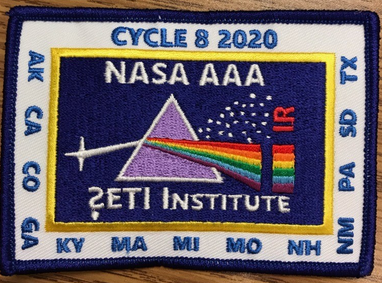
In collaboration with Keene Amateur Astronomers, the Southern Vermont Astronomy Group will be hosting Susan Rolke. Susan is a KAA member and local science teacher who was selected to participate in the SETI Institute’s NASA Airborne Astronomy Ambassadors program.
Susan will be discussing her participation in the program which selected high school science teachers to receive online and in-person training and a week at a NASA research center in California. While there, Susan accompanied scientists on an overnight research flight on NASA’s Stratospheric Observatory for Infrared Astronomy (SOFIA) — a modified 747, equipped with a specialized infrared telescope. The program culminates in classroom delivery of a SOFIA science-oriented curriculum module.
January 11, 2022 7:00PM EST — SoVerA Monthly Meeting — “Rockets!”
Held remotely via ZOOM, click here to join the meeting: https://zoom.us/j/94691230307.
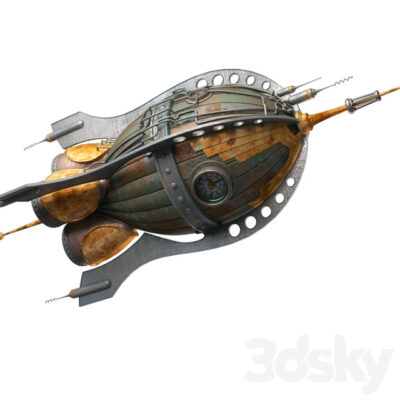 Please join us on Tuesday, January 11, at 7:00PM EST for the Southern Vermont Astronomy Group’s monthly meeting. Claudio Veliz, former SoVerA president and amateur astronomer, will be presenting on rocketry:
Please join us on Tuesday, January 11, at 7:00PM EST for the Southern Vermont Astronomy Group’s monthly meeting. Claudio Veliz, former SoVerA president and amateur astronomer, will be presenting on rocketry:
Propulsion, in principle, is an embarrassingly simple principle. Yet it is what gives a thrill on the 4 th of July, got Neil and Buzz to the moon…and back, and places the HST and JWST out to where they can do what they do. In this presentation, we’re going to take a short trek into rocketry – the basics of chemical propulsion. We’ll go into how some of us in SoVerA are planning to launch our own model rockets later this spring and how you can join in! We’ll also fly into a discussion of a couple propulsion types NASA and others are working on which are beyond current, conventional chemical systems. These may soon get probes and humans to space places wa-ay beyond anything we are contemplating now. Links will be provided for further engagement after the presentation.
December 14, 2021 7:00PM EST — SoVerA Monthly Meeting — “Galileo” and “Aliens”
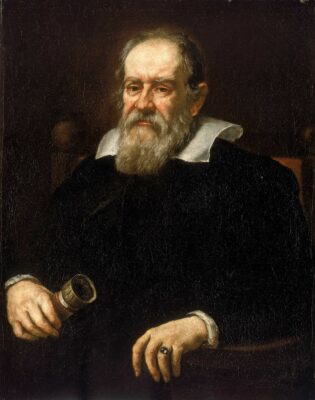
Please join us on Tuesday, December 14, at 7:00PM EST for the Southern Vermont Astronomy Group’s monthly meeting. We will be hosting Cale Shipman, amateur astronomer, who will be giving two presentations – one on Galileo and the other on aliens!
Though Cale’s formal educational background is in chemistry and pharmacy, he is an active amateur astronomer – currently involved in 4 separate groups. While he has dabbled in many areas of astronomy, including telescope making, astrophotography, and solar observing, he has found a passion in public outreach, which may be an extension of his time as a National Parks Service ranger. Please join us for what will be a fascinating evening with Cale!
November 9, 2021 7:00PM EST — SoVerA Monthly Meeting — “Telescopes!” and “Howling at the Moon”
Please join us on Tuesday, November 9, at 7:00PM EST for the Southern Vermont Astronomy Group’s monthly meeting where two of our members will be giving presentations! SoVerA president, Pat Porch, will be giving a detailed account on considerations for telescope buying in a COVID-19 world and board member, Rick Bates, will regale us with the opportunities lying in moonlit nights. Held remotely via ZOOM, click here to join the meeting: https://zoom.us/j/94691230307.
Telescopes!
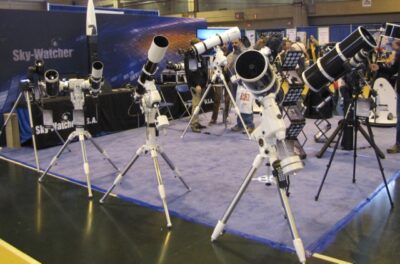
(Image Credit: Pat Porch)
Are you thinking about buying a telescope or maybe upgrading the one you have? SoVerA president Pat Porch will discuss the different types of common telescopes, how they work, and the pros and cons of each type. Commercial buying vs. build your own and all the extras will be discussed and he will share some experiences that can help you decide on your next telescope purchase. Also, find out how Covid-19 has changed telescope buying.
Howling at the Moon
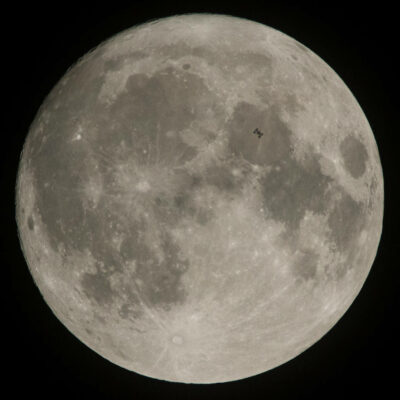
(Image Credit: NASA)
Amateur astronomers are often frustrated that the moon interferes in their observing. As the second brightest object in our sky, the moon often washes out the stars in its sector of the sky and treasured deep sky objects, making it impossible to view them.
Rather than join the coyote chorus and hurl curses at our satellite, you can do some lunar observing. This month’s SoVerA meeting will feature a brief list of interesting things that you can observe on the moon itself. And unlike the faint fuzzies that astronomers often try to locate and bring into focus, the moon is an easy target. Its brightness allows for more than adequate light gathering, even at substantial magnification.
Join or ZOOM meeting next Tuesday at 7:00 pm EST to find out how you can still do astronomy on a brightly moonlit night.
October 12, 2021 7:00PM EDT — SoVerA Monthly Meeting — “A New Dawn: Asteroids Ceres and Vesta Revealed”
This meeting will be held via Zoom at https://zoom.us/j/94691230307.
Please join us on Tuesday, October 12, at 7:00PM EDT for the Southern Vermont Astronomy Group’s monthly meeting. We will be hosting Gregory T. Shanos, Pharm.D., a pharmacist by trade and NASA Solar System Ambassador by passion. He will be presenting “A New Dawn: Asteroids Vesta and Ceres Revealed.” NASA’s Dawn spacecraft arrived at Asteroid Vesta in July 2011, orbited the asteroid for over a year to map and study its surface features to gain insights on it’s internal structure. The spacecraft then departed Vesta in Sept 2012 to rendezvous with dwarf planet Ceres in 2015. Dawn then orbited Ceres, mapped and studied its surface. Greg will discuss an overview of the scientific findings from this mission to these two asteroids.
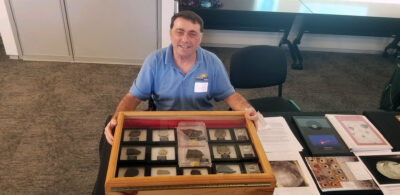
September 14, 2021 7:00PM EDT — SoVerA Monthly Meeting — “Ask Astronomers”

Please join us on Tuesday, September 14, at 7:00PM EDT for the Southern Vermont Astronomy Group’s monthly meeting, with September’s topic of “Ask Astronomers!” hosted by members of SoVerA. This meeting will be held via Zoom at https://zoom.us/j/94691230307.
We will host a conversation among members and attendees – doing our best to answer whatever is asked. Please feel free to bring any questions regarding astronomy equipment for practical advice on its use or for diagnosis and suggested repair of any problems.
We are looking forward to an evening of lively discussion and hope to see you there!
July 13, 2021 7:00PM EDT — SoVerA Monthly Meeting — “Special Relativity is Relatively Weird (in a special way)“
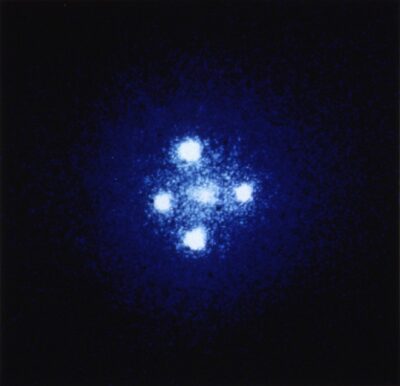
Please join us on Tuesday, July 13, at 7:00PM EDT for the Southern Vermont Astronomy Group’s monthly meeting, “Special Relativity is Relatively Weird (in a special way)” presented by Erik Schmitt. This meeting will be held via Zoom at https://zoom.us/j/94691230307.
Whether it be via stargazing, observing through a telescope, looking at an image of space, or beginning to study the cosmos, attempting to conceive of such staggering vastness is a universally humbling and awe-inspiring experience. Over such enormous distances our fundamental “common sense” conceptions of time no longer apply. Even light, which on a human scale travels so quickly as to be nearly instantaneous, appears positively sluggish on cosmic scales, taking eons to travel even small fractions of our universe where it could potentially cause an effect.
This combination of distance and a finite speed of light means that depending on where you are and where you are going, you and other observers will experience the same event at different times, or in a different order, or perhaps not even agree on whether events occurred at all! Time, it turns out, is relative.
After a presentation to cover the basics, this meeting is intended to be a forum for discussion and Q&A among attendees. All experience levels are welcome and though participation in discussion is encouraged, it is not required.
Erik Schmitt is the director of the Perkin Observatory and teaches Physics and Astronomy at the Dublin School in New Hampshire. He is also currently serving on the board of the Southern Vermont Astronomy Group.
June 8, 2021 7:00PM EDT — SoVerA Monthly Meeting and Special Event with the Dublin School, Middlebury College, and Mittelman Observatory — Dr. Amanda Bosh “What the Outer Edges of Our Solar System Tells Us about Its Beginnings”
Please join us on Tuesday, June 8, at 7:00PM EDT for a special event! The Southern Vermont Astronomy Group, in collaboration with Middlebury College, Mittelman Observatory, and the Dublin School, is hosting Dr. Amanda Bosh of Lowell Observatory.
This is a virtual event and prior registration is required – please do so at http://sovera.org/astrotalk.
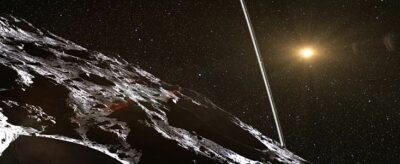
The far extent of our solar system—the Kuiper Belt and beyond—is a largely unaltered relic, frozen shortly after the formation of the planets. Exploring the small bodies that inhabit this region leads to a better understanding of the composition of our proto-planetary nebula, motions within the solar system before the planets acquired their current locations, and allows us to compare our solar system to those found around other stars.
Undergraduate students have been involved in this research, from observations at telescopes around the world, to data analysis, to theoretical modeling. Dr. Bosh will discuss her research and how it dovetails with other areas of research at Lowell Observatory.
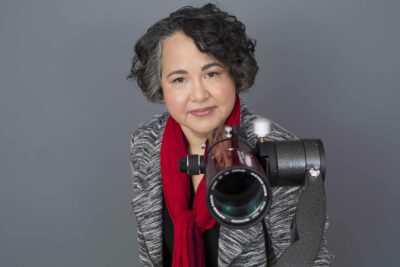
Dr. Amanda Bosh is the Observatory Operations Manager at Lowell Observatory in Flagstaff, AZ. Her research involves studies of icy bodies in the outer solar system, with the aim of understanding transient atmospheres and ring systems. As an observational astronomer, her work takes her to high, dry mountains around the globe. She was a member of the team that made the first direct detection of Pluto’s atmosphere in 1988, and has studied the rings of Saturn, Uranus, Neptune, and Centaurs. Dr. Bosh received her S.B. degrees from MIT in 1987 (Planetary Science and Materials Science) and her Ph.D. from MIT in 1994.
May 11, 2021 7:00PM EDT — SoVerA Monthly Meeting — “Eclipses 101”
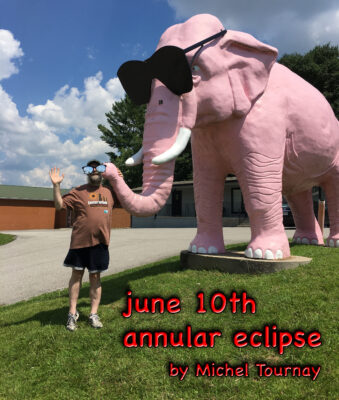
Please join us on Tuesday, May 11, at 7:00PM EDT for the Southern Vermont Astronomy Group’s (SoVerA) monthly meeting held via Zoom at https://zoom.us/j/94691230307.
We are excited to again host Michel Tournay, a prolific amateur astronomer and astrophotographer from Canada. Michel’s photography can be seen on NASA’s website! He will be presenting “Eclipses 101” in anticipation of the June 10th solar eclipse. Michel will discuss the different kinds of eclipses: lunar, total solar, partial solar, annular, and hybrid eclipses. He will discuss the location and time of the June 10th eclipse, and will cover eye and camera protection, filters, Eclipse Photography, and things to do during the partial phases – including solar crescents projections. Michel will conclude with a map for the 2024 solar eclipse.
April 13, 2021 7:00PM EDT — SoVerA Monthly Meeting — “The Measurement Controversy of the Hubble Constant and its Relationship to Dark Energy”

Please join us for this interesting talk by Peter Mulhall!
The Hubble constant tells us how fast space is expanding away from us or from any other point in the universe. It is a measurement that has been continually calculated since its discovery by Edwin Hubble in 1929, because it tells us a great deal about the origin, age, evolution, and the fate of the cosmos.
There are two ways of measuring the Hubble constant. One is to measure the distance and speed of receding galaxies and doing a calculation using Hubble’s law. The other is to make a detailed analysis of the Cosmic Microwave Background within the current model of the Big Bang, which allows us to derive its current value. The problem is, these methods don’t agree, not even “close” – that is, their margins of error do not overlap.
In 1998, it was discovered that this rate of expansion is accelerating. The cause of this expansion is termed “dark energy” or within General Relativity, a non-zero cosmological constant. The nature of dark energy is unknown and the small estimated value of the cosmological constant also has no accepted current explanation.
Peter is a retired high school physics teacher and adjunct college lecturer in mathematics and computer science at Keene State College. His talk in April will give a brief history of how we got to this conundrum and what are the current efforts by astrophysics to try to resolve it.
March 9, 2021 7:00PM EST — SoVerA Monthly Meeting — “Taking the Measure of Variable Stars: From Getting Started to Getting Good”
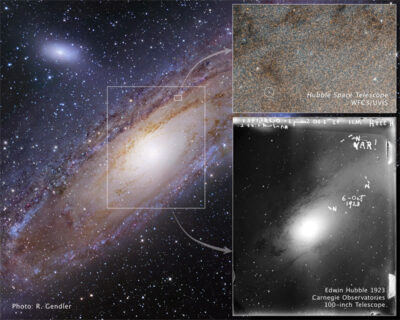
SoVerA member, and former president, Claudio Véliz, will be presenting on variable star observing and measuring. This is a talk for those contemplating moving on from astronomical sightseeing to contributing to real science. We will look at what it takes to conduct simple, yet accurate measures of the brightness of stars whose natures remain mysterious. Participants will learn about a range of skills, from easy, beginner tutorials, to submitting observation reports to the American Association of Variable Star Observers (AAVSO) and other scientific research conduits. We’ll discuss naked eye variable star observing as well as more technical observing efforts. Links and other sources will be discussed for those wishing to wade into the tall and thrilling grass.
Claudio taught astrophysics at Columbia University, New York’s Hayden Planetarium, Castleton University, and currently lectures at Keene State College. He has twice served as SoVerA President. He observes peacefully these days from his back deck observatory in Chester, Vermont.
Relevant links for this talk:
AAVSO home page – https://www.aavso.org/
AAVSO Variable Star Simulator Tutorial – https://slideplayer.com/slide/
Weather Underground – https://www.wunderground.com/
Clear Sky Chart – https://www.cleardarksky.com/
GOES Image viewer – https://www.star.nesdis.noaa.
Stellarium Planetarium Software – https://stellarium.org/
Starry Night – https://starrynight.com/
Sky Safari phone app – https://skysafariastronomy.
Skeye phone app – https://play.google.com/store/
February 9, 2021 7:00PM EST — SoVerA Monthly Meeting — “Astrophotography and Celestial Events”
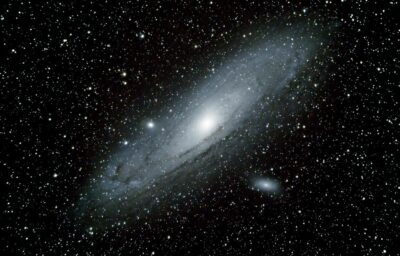
For February’s monthly meeting, Southern Vermont Astronomy Group is hosting another Zoom meeting from the comfort and warmth of our own homes. SoVerA members Matthew Harris and Rick Bates will be leading the night’s discussion – Matt will be sharing his experience delving into the realm of astrophotography and Rick will talk about upcoming celestial events of interest.
Please join us on February 9 at 7:00PM EST for a fun night of astronomical discussion!
January 12, 2021 7:00PM EST — SoVerA Monthly Meeting/SPECIAL EVENT — “The Cassini Mission to Saturn – An insider’s view of an international journey of discovery”

The Southern Vermont Astronomy Group, in collaboration with Middlebury College, the Mittelman Observatory, and the Dublin School, is proud to host Dr. Richard G. French, McDowell/Whiting Professor of Astrophysics, Wellesley College, for our January 2021 monthly meeting.
NASA’s Cassini spacecraft orbited Saturn for thirteen years, transforming our understanding of this beautiful ringed planet and its entourage of moons. From giant atmospheric storms on Saturn and methane seas on Titan, to icy plumes on Enceladus and density waves in Saturn’s rings created by the planet itself, the mission was filled with surprises and delights. Professor French was a Cassini science team member from the earliest days of the mission in 1990 until its intentional crash into Saturn in 2017. In this presentation, he will share an insider’s view of this grand international venture, describing the fourteen years of preparation for the orbital tour that began in 2004 and highlighting some of the spectacular science results of the multi-instrument mission.
Dr. Richard G. French is the Louise Sherwood McDowell and Sarah Frances Whiting Professor of Astrophysics and Professor of Astronomy at Wellesley College. He received both his undergraduate degree and his Ph.D. from Cornell University, where he studied under Carl Sagan. After a stint at MIT, he joined the faculty of Wellesley College. As a planetary astronomer and a founding member of NASA’s Cassini Science Team, French has studied the dynamics and structure of planetary rings, the chaotic orbits of planetary satellites, and the atmospheres of giant planets. He enjoys both providing opportunities in astronomical research to non-scientists as well as rigorous training to students bound for graduate school. Having chosen a career in astronomy over opera, French is a devotee of the liberal arts, music, and the outdoors.
December 8, 2020 7:00PM EST — SoVerA Monthly Meeting — “Virtual Tour of Williams College Planetarium” https://zoom.us/j/94691230307
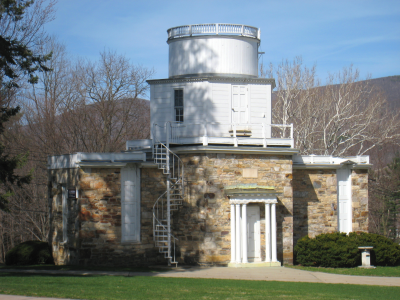
For our December monthly meeting, we are hosting a ZOOM presentation in which Williams College Planetarium TA Peter Knowlton will provide a guided tour of the Williams College planetarium. He will also provide an astronomy lecture such as one would hear in an actual tour of the facility. There will be time for questions and answers following the tour and lecture.
November 10, 2020 7:00PM EST — SoVerA Monthly Meeting — “Getting Started in Astronomy” https://zoom.us/j/94691230307
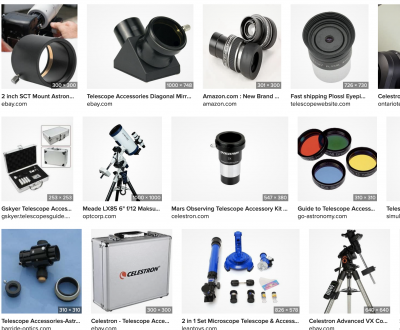
Looking for things to do in the long nights ahead? Considering a holiday gift for the whole family?
The topic for November’s Southern Vermont Astronomy Group (SoVerA) meeting is “Getting Started in Astronomy.” The presentation will include information on how to begin backyard viewing even before getting any sort of telescope. There will be basic information on the various types of telescope available to the amateur astronomer and a discussion of related equipment. By the end of the presentation, viewers should be equipped to begin viewing the night sky in their own neighborhood. After the presentation, there will be ample time for questions from the audience.
Presenters will be SoVerA members Alina Marsfelder and Rick Bates, and SoVerA President Patrick Porch. The three presenters have 50 plus years of combined experience.
This is also a great time of year to join SoVerA; joining now will allow you to begin your 2021 membership early, giving you the rest of 2020 and all of 2021 for one price. Details can be found at www.sovera.org/membership/.
October 13, 2020 7:00PM — SoVerA Monthly Meeting — “You can almost touch the stars”
Even if you wanted to touch a star, they’re all impossibly distant. Despite these great distances, astronomers have learned an enormous amount about stars. How? The most common method to study the stars is called spectroscopy, which is the science of analyzing the colorful rainbow spectrum produced by a prism-like device.
Until recently, spectroscopy was too expensive and too complicated for all but a handful of amateurs. Today, though, new tools make spectroscopy accessible to almost all of us. You no longer need a PhD, dark skies, long exposures, enormous aperture … or a big budget! With your current telescope and FITS camera (or a simple web cam or even a DSLR without a telescope) you can now easily study the stars yourself. Wouldn’t you like to detect the atmosphere on Neptune or the red shift of a quasar right from your own backyard?!
This talk, with lots of interesting examples, will show you what it’s all about and help you understand how spectroscopy is used in research. Even if you are an armchair astronomer, understanding this field will enhance your understanding of the things your read and the night sky. We’ll do a live Q&A after Tom’s 45-minute presentation.
Tom Field is has been a Contributing Editor at Sky & Telescope Magazine for the past 7 years. He is the author of the RSpec software (www.rspec-astro.com) which received the S&T “Hot Product” award in 2011. Tom is a popular speaker who has spoken to hundreds of clubs via the web at many conferences, including NEAF, the NEAF Imaging Conference, PATS, the Winter Star Party, the Advanced Imaging Conference, SCAE, and others. His enthusiastic style is lively and engaging. He promises to open the door for you to this fascinating field!
September 8, 2020 7:00PM — SoVerA Monthly Meeting/Special Event — Dr. Heidi Hammel — Exploring the Solar System with the James Webb Space Telescope
Dr. Hammel will be presenting on NASA’s next flagship facility, the James Webb Space Telescope, scheduled for launch in October 2021. Dr. Hammel is one of the six Interdisciplinary Scientists for Webb, and thus has guaranteed observing time. Her Webb observing program focuses on our Solar System! Planned targets run the gamut of Solar System objects: asteroids, moons, Mars, Jupiter, Saturn, rings, Uranus, and Neptune. In some cases (Pluto and other Kuiper Belt Objects, comets, and Titan), she will coordinate with other guaranteed time observers to ensure most efficient use of JWST. In this talk, she will give a status update on Webb, review some of the overall science goals of the Webb mission, and explain what she and her team hope to learn with this new tool for exploring our Universe.
Dr. Heidi B. Hammel received her undergraduate degree from MIT in 1982 and her Ph.D. from the University of Hawaii in 1988. After a postdoc at JPL, she returned to MIT, where she spent nearly nine years as a Principal Research Scientist in the Department of Earth, Atmospheric, and Planetary Sciences. She is now the Vice President for Science at AURA, and works in Washington, DC helping to manage large telescopes for the US government. Her research has focused on Neptune and Uranus, using Hubble Space Telescope and many other facilities. Hammel has received many awards, both for her science and her outreach work, and has been interviewed for Newsweek and the New York Times. Asteroid “1981 EC20” has been renamed “3530 Hammel” in her honor.
August 11, 2020 7:00PM — SoVerA Monthly Meeting — Astronomy, Digital Imaging, and You — Zoom Link: https://zoom.us/j/94777289079
The advent of digital imaging has revolutionized astronomy nearly as significantly as the development of the telescope itself and for the same reason: it allowed humans to see so much more than we ever could before.
Most of us now carry a small computer in our pockets that is more powerful than the largest supercomputers of just a few decades ago. Similarly, even the most casual of astronomy hobbyists now have affordable access to imaging equipment that easily outclasses what would only have been found on the best and most advanced telescopes in the world not too long ago.
This talk by Erik Schmitt, Director of the Perkin Observatory in Dublin, NH, will be a primer on electronically assisted astronomy (EAA) and astro-imaging for the hobbyist and how you too can take advantage of the availability of this technology to see so much more. After a bit of the physics and engineering of how digital imaging works, the talk will focus on what you can do from your yard for the cost of an eyepiece and how to get started.
This meeting will be held online on Tuesday, August 11, at 7:00 pm.
July 14, 2020 7:00PM — SoVerA Monthly Meeting — The Lighter Side of Dark Matter: An Astronomette’s Journey into the Realm
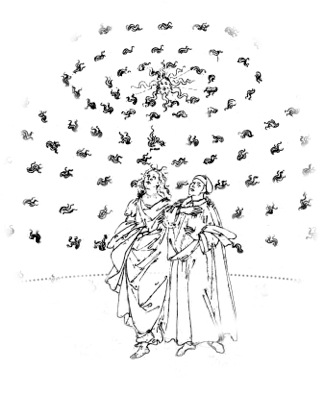
Ginny Siggia comes to the Southern Vermont Astronomy Group from Keene, NH, where she took several astronomy courses with Claudio Véliz at Keene State College’s CALL program. At his encouragement, she decided to revisit a long-dormant chapter in her deep-space dark past. Prior to retirement, Ginny worked at MIT for 38 years, including twelve in a non-professional capacity with a group of astronomers. It was there that she discovered the lure of occultations and observatories, grappled with incomprehensible magnitudes of scale, and witnessed several exciting milestones in astronomy. However, her MIT years were by no means limited to the celestial realm. Join us as she shares some of her experiences — astronomical and otherwise — at a quirky, fun, and astonishing place.
June 9, 2020 7:00PM at — SoVerA Monthly Meeting — An Interstellar Ambassador – Comet 2I/Borisov
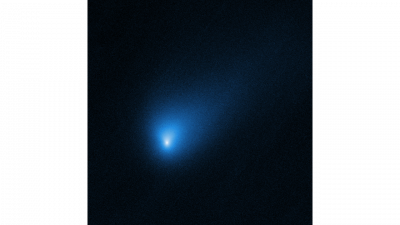
Amateurs have long contributed significantly to the field of astronomy and even today continue to find new discoveries. This past year, Crimean amateur astronomer Gennady Borisov, found the first interstellar comet while using his personal observatory and a telescope he built himself. At this month’s Southern Vermont Astronomy Group meeting, SoVerA member Margot Schmitt will discuss this discovery, how we know the comet’s origins are from outside our solar system, and what new information this interstellar ambassador provides.
May 12, 2020 7:00PM — SoVerA Monthly Meeting — Peter Mulhall presents:
The Relationship between Galileo and Kepler and their role in the Scientific Revolution

The Scientific Revolution began in 1543 with the work of Copernicus, On the Revolutions of the Heavenly Orbs, and culminated in Newton’s: The Mathematical Principles of Natural Philosophy, published in 1687. However, Copernicus’ system would have remained a mere alternate computation method of planetary positions and Newton would have had little to contemplate when watching the apple fall if it were not for the discoveries of Galileo and Johannes Kepler.
The work of Galileo and Kepler laid the foundation of the Scientific Revolution. Although they never met, they had brief episodes of correspondence and were well aware that together, they alone were at the forefront of winning acceptance of the Copernican Heliocentric universe with the Earth as just another planet.
But Galileo and Kepler were almost complete opposites in background, temperament and approach to their investigation of nature. They distrusted or ignored most of the fundamental discoveries of the other in presenting their support of the Copernican hypothesis. Yet together, their work convinced Newton and most of his contemporary scientists of the truth of the heliocentric system at least a generation before the publication of Newton Principia.
Peter is a retired high school physics teacher and adjunct college lecturer in mathematics and computer science. He will present the life and discoveries of Galileo and Kepler and their relationship to each other and to the Scientific Revolution.
March 10, 2020 7:00PM at the Chester Town Hall, second floor, in Chester, VT — SoVerA Monthly Meeting – Telescope Making with Rick Hunter
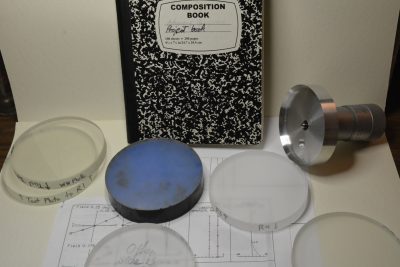
What’s the story with all those pieces of glass? When Rick Hunter made a mirror for a reflecting telescope all he needed was two pieces: a mirror blank and a tool. Pushing the mirror over the tool with grit and water made the mirror concave. Fine grinding and polishing made it smooth, and figuring made it a precision optical surface. Ah, but now we are working on a refractor – a telescope with lenses, not a mirror. That’s two lenses, each with two precision surfaces to grind and polish, and all their surfaces must be precise, with the right curves and even their thicknesses must be controlled!
Find out more as Rick Hunter shows and tells the story of his refractor project at the SoVerA meeting, Tuesday, March 10. This meeting will be held at the new alternate venue, the Chester Town Hall, where the February meeting was held. Please take note of the change, and join us for an interesting presentation.
~~~~~~~~~~~~~~~~~~~~~~~~~~~~~~~~~~~~~~~~~~~~~~~~~~~~~~~~~~~
February 27, 2020 6:30PM at the Whiting Library, in Chester, VT — Movie Night
Come and join SoVerA for popcorn and a movie!
San Francisco biologist Elizabeth Driscoll (Brooke Adams) turns to health inspector Matthew Bennell (Donald Sutherland) for help when her live-in beau begins acting odd — and distant. Matthew and Elizabeth notice that suddenly almost everyone around them has become impassive. When their friends discover a developing doppelgänger in their commercial mud baths, the foursome realizes an alien invasion is under way. Can they stop it?
~~~~~~~~~~~~~~~~~~~~~~~~~~~~~~~~~~~~~~~~~~~~~~~~~~~~~~~~~~~
February 11, 2020 7:00PM at the Chester Town Hall, second floor, in Chester, VT — SoVerA Monthly Meeting – Lowell Putnam and the Lowell Observatory
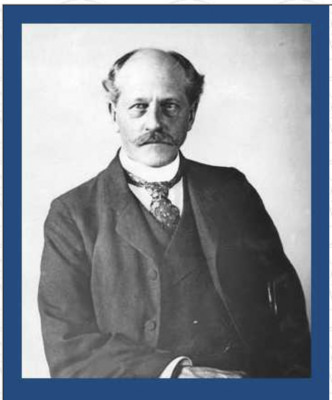
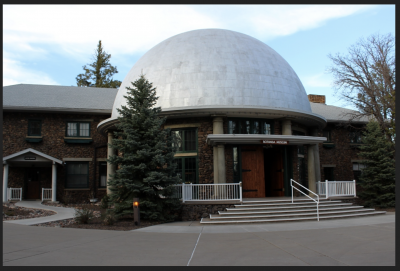
SoVerA will host a talk by Lowell Putnam on the history of the Lowell Observatory and its current research directions. The presentation will include images from the Observatory’s 4-meter telescope. The evening will conclude with a question and answer period with the audience.
Please note that the meeting will be held at the Chester Town Hall, on the second floor. The Town Hall is handicap accessible via a ramp in the rear parking lot and an elevator. For those unfamiliar with it, the Town Hall is located in the Depot on Route 103, across the triangular green from Lisa’s Market and the Railroad Station.
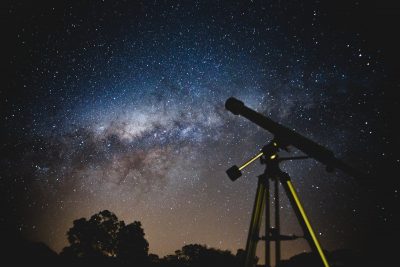
At our January 2020 meeting, we will discuss how to set up your telescope and how to use it to view a variety of night sky sights. We will discuss lunar, planetary, and deep-sky viewing. We are also planning to spend time outdoors doing some observing (weather permitting, of course). Attendees are invited to bring their own telescopes, including ones that may need some sort of adjusting, tweaking, or banging on with hammers.
This will be a hands-on meeting. Those who attend should leave better equipped to enjoy the night skies on their own and with friends or family.
Please join us on Tuesday, January 14, 2019 at 7:00 pm at the Whiting Library in Chester, Vermont. SoVerA meetings are free and open to the public and the space is ADA accessible.
At the December monthly meeting of The Southern Vermont Astronomy Group, SoVerA member Michel Tournay will present on his experience and photography from this year’s Chilean solar eclipse adventure. Armed with 12 cameras, he endeavored to obtain photographs and video footage of the eclipse in wide-angle, closeup, and the difficult-to-capture shadow bands.
Please join us on Tuesday, December 10, 2019 at 7:00 pm at the Whiting Library in Chester, Vermont. SoVerA meetings are free and open to the public.
November 12, 2019 7:00PM at the Whiting Library in Chester, VT — SoVerA Monthly Meeting – The Beginning Stargazer – Choosing the Right Equipment
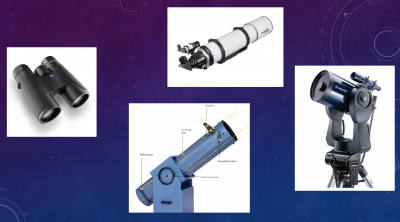
If you are interested in pursuing astronomy as a hobby or part of your or your children’s ongoing education, you are faced with a lot of complicated decisions before you begin. If you would like some guidance in selecting the equipment best suited for your interests and budget, the Southern Vermont Astronomy Group (SoVerA) is hosting a discussion at its November meeting which may be of help to you.
Patrick Porch and Rick Bates, long-time members of SoVerA, will talk about the various types of observing equipment available to amateur astronomers. There will be discussion of the pros and cons of the various types of equipment, and a variety of types of telescope on display to look at. If the skies permit, there will be some informal observing after the presentation.
Please join us on Tuesday, November 12, 2019 at 7:00 pm at the Whiting Library in Chester, Vermont. SoVerA meetings are free and open to the public.
October 8, 2019 7:00PM at the Whiting Library in Chester, VT — SoVerA Monthly Meeting – Prof. John Thorstensen “How Do We Know That?”

Nowadays it seems that hardly a week goes by without the media trumpeting some sensational astronomical discovery. These often seem almost impossibly esoteric, and in particular anyone with a bit of skepticism is bound to wonder how astronomers can possibly have any confidence in their conclusions. Some people go further, and become radical skeptics who distrust any scientific assertion that isn’t immediately obviously true. The flat-earth movement is a somewhat silly example, but other manifestations of extreme skepticism — most notably denial of anthropogenic climate change — actually put the world in danger.
In this context, questions like “How does science work? How do we know that?” move from the realm of academic curiosities into matters that concern all citizens. Astronomy, in addition to studying beautiful and majestic subjects, also provides a superb and inspiring example of the deductive power of human thought — an example that illuminates how science works in general.
In this non-technical talk, suitable for all ages and all levels of understanding, I’ll describe how we know what we know about the universe around us, focusing on its size and age. I’ll emphasize simple, common-sense principles used at each stage, and avoid bogging down in details. And unlike Whitman’s “learn’d astronomer”, I’ll try to never lose sight of the grandeur of creation.
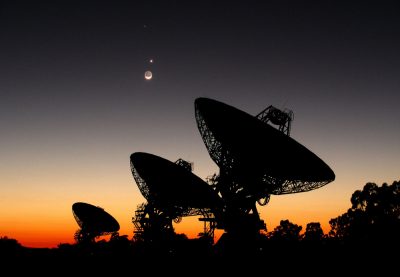
In 1977 a researcher walked into a radio telescope control room and saw something extraordinary on a printout. The telescope had recorded a radio signal from near the constellation Sagittarius. He was so struck by how unusual it was that, in the margin, he scribbled the word “WOW!” It has yet to be satisfactorily explained, even by traditionally dispassionate researchers in the field. This will be a review of why its characteristics – and those of a number of similar events – are so intriguing to researchers and how we are working to uncover the sources of these signals. Meanwhile, no one has eliminated the possibility of a natural – or non-natural – origin. This is a real case where the truth is out there…
The Southern Vermont Astronomy Group will be hosting a presentation by Claudio Veliz that will be geared for general audiences and will include Hubble images as well as translated sound recordings of some of these very mysterious space signals.
August 13, 2019 7:00 PM at the Whiting Library in Chester, VT — SoVerA Monthly Meeting – LIGO and Gravitational Wave Astronomy: What is it, how does it work, what does it do, and why does it matter?
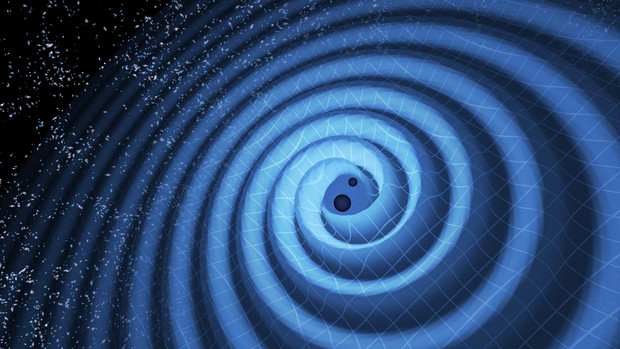
Physics so far describes only two fundamental forces that function at distances larger than the width of an atomic nucleus. They are electromagnetism (light) and gravity. Throughout the entirety of human history, we have relied exclusively on light to observe and study the universe outside our solar system. We have come far but have found opaque barriers that light cannot penetrate and objects that don’t emit or interact with light in the first place which are literally “invisible” to us.
In 2015, using the principles of a scientific instrument and experiment first performed in 1887, a masterpiece of engineering capable of unprecedented sensitivity called LIGO (Laser Interferometer Gravitational Wave Observatory) announced the first successful detection of a gravitational wave and thus began a new chapter of astronomy utilizing a second fundamental force. As this technology develops, we will increasingly be able to “see” where light cannot take us and find more answers to some of our biggest questions.
The Southern Vermont Astronomy group will be hosting a presentation by Erik Schmitt on LIGO, how it works, what it has done so far, and what it might lead to in the future. As always, there will be significant discussion and Q&A throughout and after the presentation. This event is enthusiastically open to the public and any level of experience is welcome.
July 25, 2019 7:00 PM at the Whiting Library in Chester, VT — SoVerA Film and Discussion Night – Black Holes are Relatively Weird

Image Credit: NASA
We are going to put a handful of seemingly straightforward scenarios into the vicinity of a black hole to practice wrapping our minds around some of the most unintuitive and extreme principles and predictions of Einstein’s theories of relativity. We will delve not only into relativistic time dilation (where time “slows” down) but into how it is that different observers in the same objective reality will disagree about the order in which events occur and even whether events even happen at all! No physics or mathematics background is necessary, only curiosity and a willingness to be causally connected to thought-provoking discussion.
July 9, 2019 7:00 PM at the Whiting Library in Chester, VT — SoVerA Monthly Meeting – Brief History of The Moon

Image Credit: NASA
We all see it. We all know it. We all take it for granted, other than as a pleasant, romantic, reflective backdrop. But…what is it? How did it come into being?
More focus is on it now because we humans finally interacted with it, physically, some 50 years ago.
The Moon.
Rick Bates and Claudio Veliz will provide a “Brief History of the Moon” at 7pm, Tuesday, the 9th of July at the Southern Vermont Astronomy Group’s monthly meeting, at the Whiting Library in Chester, VT.
They will describe the current theories about how the moon came to be, how much bigger it looked shortly after its formation, as well as some very fun bits about its history in our culture and some of our notions about how we interact with it! Graphic – and humor – heavy; this presentation is open to all.
June 11, 2019 7:00 PM at the Whiting Library in Chester, VT — SoVerA Monthly Meeting
Robyn Millan, PhD
New Space: Breakthrough Innovations for Space Science
The Southern Vermont Astronomy Group is excited to host Dr. Robyn Millan, Dartmouth College faculty, for our June monthly meeting on Tuesday, June 11th, at 7:00 pm at the Whiting Library in Chester, VT. Her presentation will discuss how her research group uses old methods in new ways and also takes advantage of new technologies to advance science.
Balloons have been an important platform for scientific measurements dating back to the late 18th century when Jeffries and Blanchard flew their instruments across the English Channel. Dr. Millan’s group looks for ways to adapt balloon technologies in order to study the space environment around Earth. Over the past few years, their flotillas of small balloons have carried instrumentation around Antarctica to make multi-point measurements of radiation belt particles as they enter Earth’s atmosphere from space. This year, they are flying their instrument on a new kind of balloon that enables ultra-long duration flights, lasting months.
We are also in the midst of a small satellite revolution. The development of small spacecraft in the commercial sector is moving at a rapid pace. Companies (e.g., One Web, SpaceX Starlink, etc.) are launching small satellites to create mega-constellations of hundreds to thousands of satellites for Earth observation and the internet in space. Dr. Millan is interested in finding ways to leverage these developments for science and will talk about the current CubeSat project and ideas for future scientific missions that use satellite constellations.
Dr. Millan has undergraduate degrees in Physics and Astronomy from U. C. Berkeley (1995) and a Ph.D. in Physics from U. C. Berkeley (2002). She has been on the faculty at Dartmouth College since 2005 and is the Principal Investigator for BARREL (Balloon Array for Radiation Belt Relativistic Electron Losses).
SoVerA is an organization composed of amateur and professional astronomers, educators, students, and lots of members of the lay public. SoVerA is dedicated to making astronomy much more accessible to all. Talks and presentations are free and open to the public. This venue is ADA accessible.
May 23, 2019 7:00 PM at the Whiting Library in Chester, VT — SoVerA Movie Night
Peter Weller, John Lithgow, Ellen Barkin, and Christopher Lloyd star in this action-packed 1984 sci-fi adventure where Dr. Banzai fights to, what else, save the Earth from alien (and mad-scientist) destruction! A classic tale of good versus evil in multiple dimensions – a must see for every classic sci-fi enthusiast!
May 14, 2019 7:00 PM at the Whiting Library in Chester, VT — SoVerA Monthly Meeting
Black Holes

Image Credit: NASA
We will start with a brief review of the discoveries which led to the idea that there might be black holes to provide the historical background for our main event of the evening. We will then explore how black holes come into being from the cores of massive stars and what they do to matter that gets too close to them. Special emphasis will be on the Event Horizon Telescope, which is as big as Earth, and the recently announced, first-ever image researchers captured of the black hole located in the nucleus of the galaxy M87. The presentation will be family-friendly and geared for general audiences.
Join SoVerA on Tuesday, May 14th, at 7:00 pm at the Whiting Library in Chester, VT for this presentation from Rick Bates and Claudio Veliz.
SoVerA is an organization composed of amateur and professional astronomers, educators, students, and lots of members of the lay public. SoVerA is dedicated to making astronomy much more accessible to all. Talks and presentations are free and open to the public. This venue is ADA accessible.
April 25, 2019 7:00 PM at the Whiting Library in Chester, VT — SoVerA Film Night
Discussing Dark Matter
For this month’s SoVerA movie/discussion night we will be following up our dark energy video series with an evening on dark matter. We will begin with a short video primer about what dark matter is and why consensus prefers the dark matter hypothesis rather than modifying gravity to explain why galaxies spin faster than they should based on their visible mass. We will then screen a panel discussion of astronomers, cosmologists, and physicists hosted by the World Science Festival intended for the public on the search for dark matter.
As always, discussion and Q&A will take place during and after the videos.
April 9, 2019 7:00 PM at the Whiting Library in Chester, VT — TESS and the Nearby Search for Life

Are we about to encounter life beyond Earth, finally, and for real? There is a survey mission now underway to carefully seek planets orbiting our closest stellar neighbors. The Transiting Exoplanet Survey Satellite (TESS) is now in progress, scrutinizing 85% of the celestial sphere in that effort.
In this graphic-rich presentation, including images from the Hubble Space Telescope and other sources, we’ll cover how the TESS mission is doing, what “exoplanets” are, what we know so far, and the methods we use to find them. We will talk about how we might determine the existence of alien life and which of these orbs may be considered, seriously, as future homes for our own descendants.
We will also cover ways audience members can become involved in exoplanet search projects.
March 28, 2019 7:00 PM at the Whiting Library in Chester, VT — Movie Night!
Mel Brooks in SPACE! A far away planet has squandered their atmosphere and developed a device to steal air from another planet. Luckily, a lone ranger (totally not Han Solo) and his sidekick (totally not Chewbacca) are motivated by money to save the day!
May the Schwartz be with you.
March 12, 2019 7:00 PM at the Whiting Library in Chester, VT — What is NEAF?
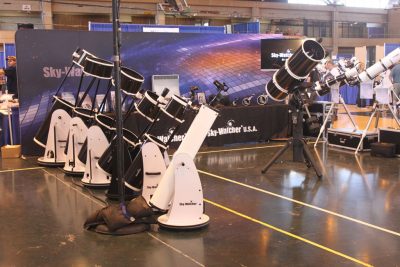
The Northeast Astronomy Forum is one of the world’s largest astronomy and space expositions, located just a few hours drive away in Suffern, NY. This year, NEAF will be held on April 6 and 7. This weekend event features world class speakers and over 120 vendors of telescopes, accessories, and just about anything you can think of that is astronomy or space-related.
If you decide to attend, you will have the opportunity to see demonstrations of some of the latest equipment and speak with knowledgeable company representatives. There is no better place to see, hold, and compare products you normally only get to see in pictures. Presentations from world-renowned speakers, kids’ activities, and solar observing are just a few of the various attractions.
